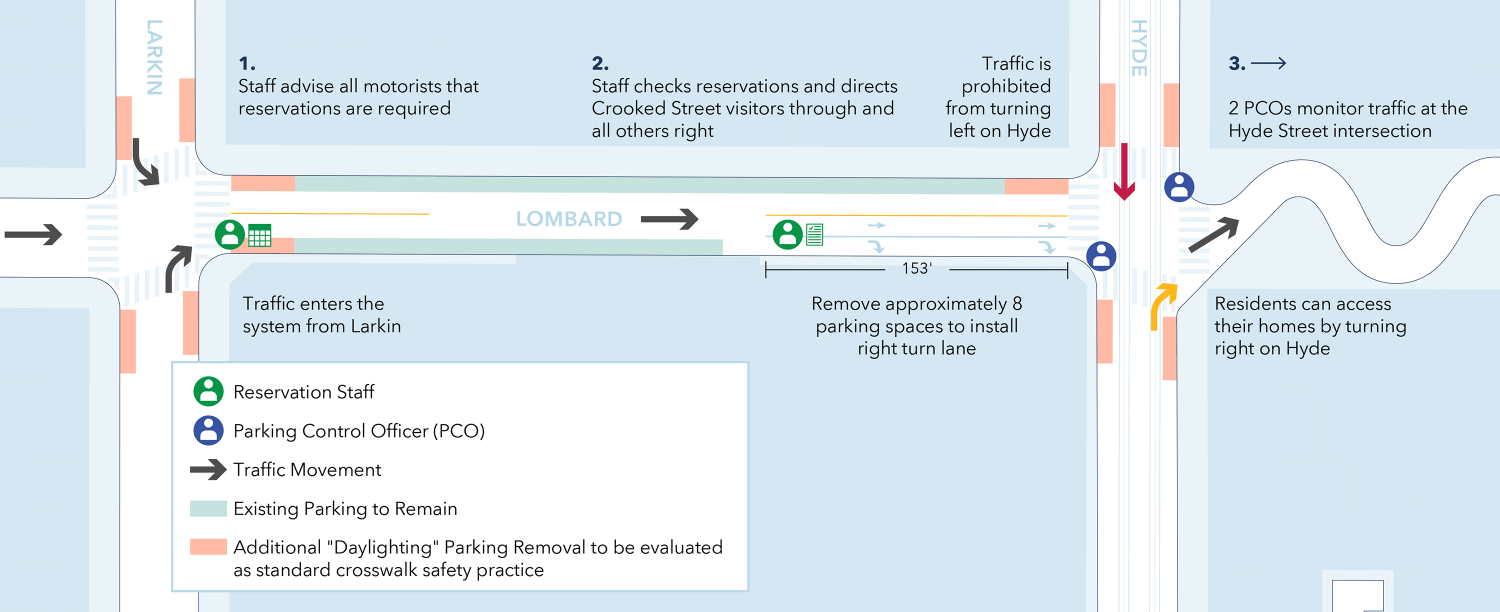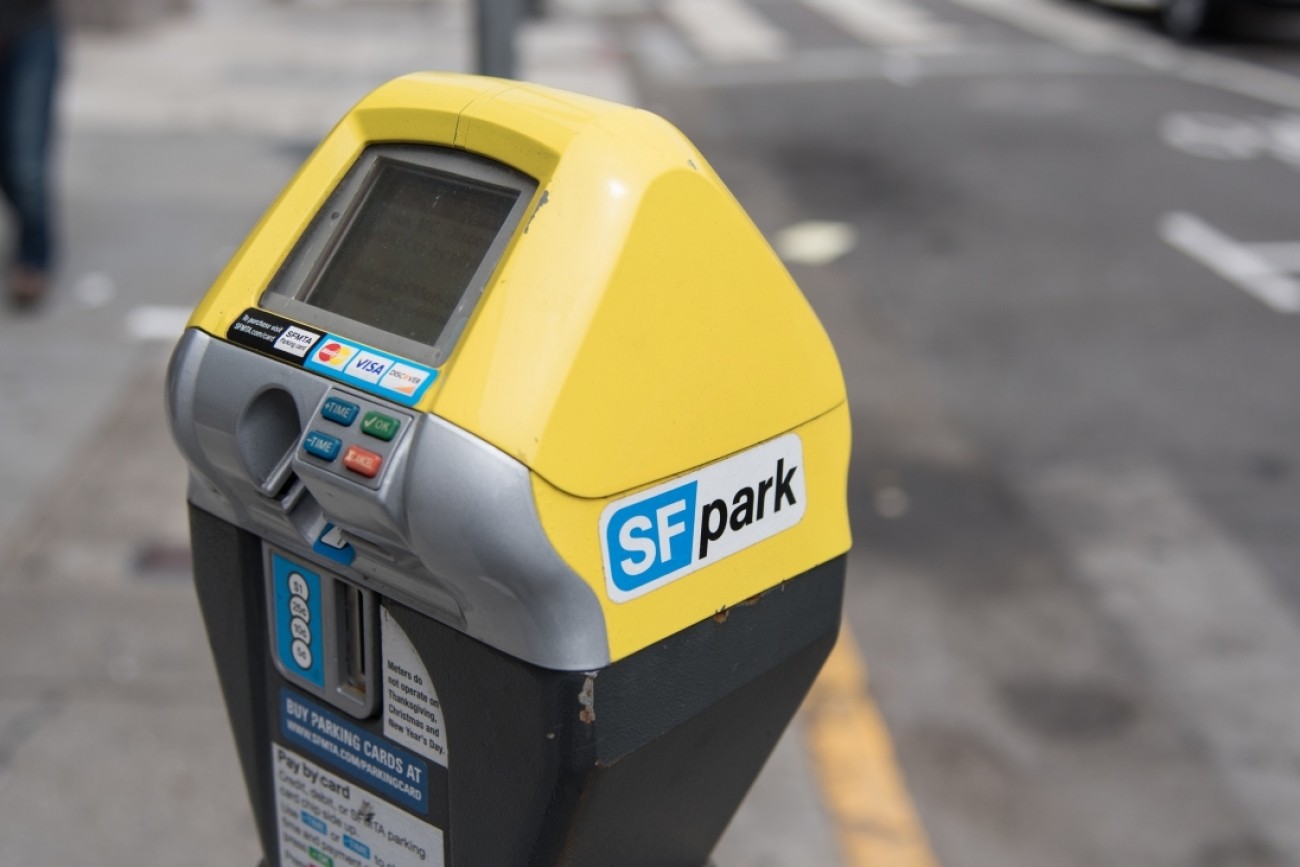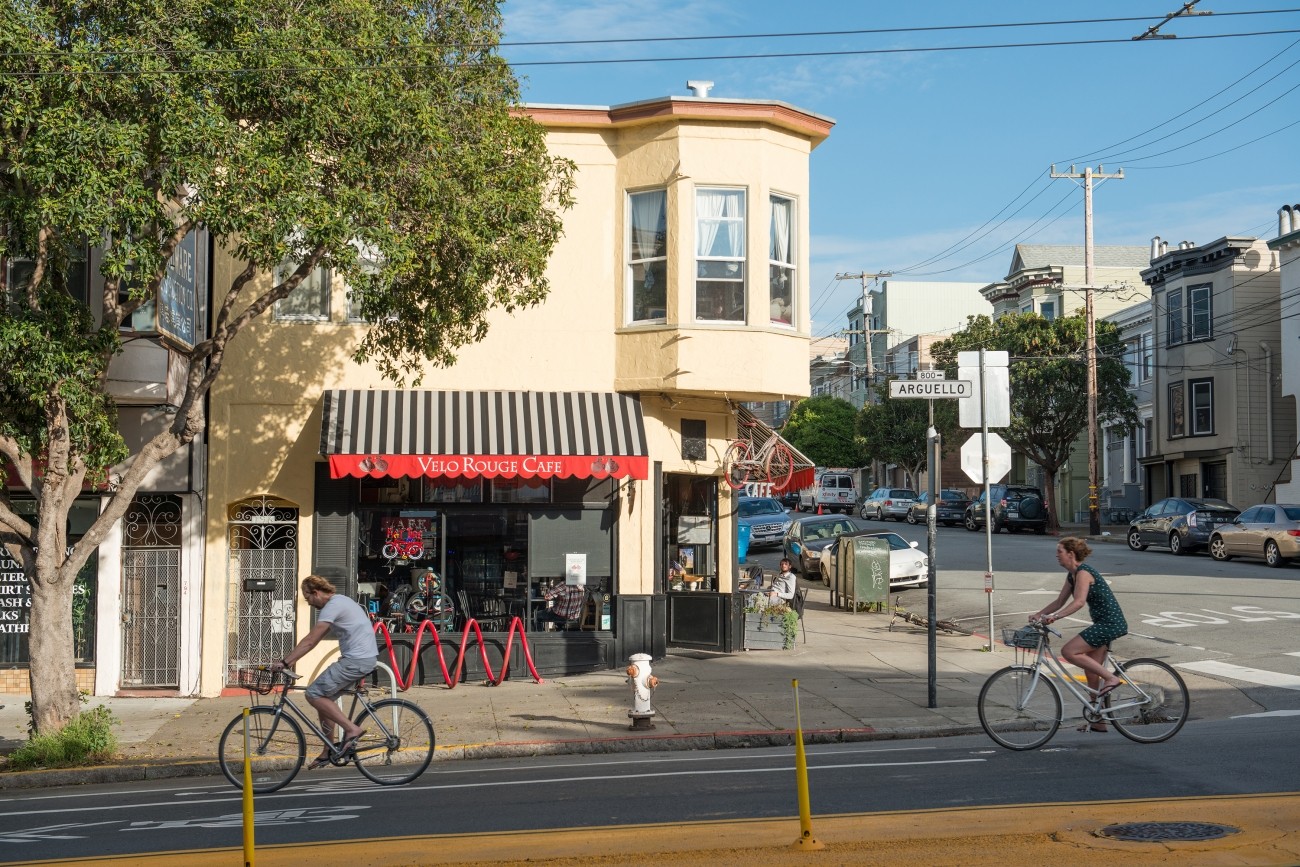2017 Study: Managing Access to the "Crooked Street"
In 2017, the Transportation Authority released a study on managing access to the “Crooked Street”—a residential segment of Lombard Street that is also one of San Francisco’s most prominent landmarks. The crooked segment of Lombard Street attracts approximately 2 million visitors each year.
The study was recommended by former District 2 Supervisor and Transportation Authority Board Member Mark Farrell as part of the Neighborhood Program and was conducted in partnership with the SFMTA.
The purpose of the study was to identify and evaluate a range of options to manage visitor access and circulation on Lombard Street between Hyde and Leavenworth streets, while maintaining the character of the block and avoiding spillover effects into adjacent streets. The study’s approach included goal-setting, existing conditions analysis, alternatives development, public outreach, and evaluation.
The Transportation Authority published the Managing Access to the "Crooked Street" (PDF) study in 2017 outlining recommended short- and mid-term strategies to inform future planning, analysis, and development to resolve the unique challenges facing the Crooked Street and its surrounding neighborhoods.
The Transportation Authority compiled a wide range of potential interventions and improvements and evaluated how well each would meet one or more of the study’s goals. A short list of options for further study were presented at two public meetings in the fall of 2016, accompanied by a feedback form that community members could respond to online and/or in person.
Study Recommendations
The final report adopted by the Transportation Authority Board recommended four strategies for further planning, analysis, and development. These strategies can be implemented in the short- and mid-term.
Improved Enforcement of Existing Regulations
Based on Transportation Authority’s outreach, it was clear there is widespread consensus among community members that more robust enforcement of existing regulations could help address perceived traffic circulation and safety issues on the Crooked Street. One strategy, which received considerable support in public feedback, would be to increase the number of SFMTA Parking Control Officers, expanding their hours of deployment and the locations they patrol. This strategy would build off the “eyes on the street” function played by neighborhood residents and is currently supplemented by the Lombard Ambassadors managed by the Mayor’s Office of Economic and Workforce Development.
Engagement of Tourism Industry as Partners in Visitor Management
Among the solutions identified is the creation of an education and marketing campaign/partnership with the San Francisco Travel Association (SF Travel), tour operators, rental car companies, and hotels. Since many tour operators bring groups to experience the Crooked Street, this effort is an opportunity to remind operators directly about how to be a good neighbor, in terms of tour group size, timing, and loading/unloading. By helping visitors make better informed decisions about when and how to access the Crooked Street, the education campaign could have a positive impact on automobile and pedestrian congestion, as well as resident and visitor access to the Crooked Street. In turn, traffic and personal safety could also improve.
Engineering and Signage Enhancements
Traffic engineering interventions—such as painted or raised sidewalk extensions, barriers, or wayfinding signage—could help to address conflicts and near-misses between pedestrians, drivers, and transit. Additional opportunities for signage enhancements, could include estimated wait times for vehicles in the queue to drive down the Crooked Street, and encouragements for drivers to lock vehicles and to leave personal belongings out of sight when parking in the area.
Reservations and Pricing System for Vehicles
One of the most direct ways to manage automobile congestion, including the vehicle queues that form at peak periods, would be to implement a system to manage paid reservations for access to the Crooked Street. Similar to how museums limit the number of tickets available at any given time for popular exhibits, and allow those who plan ahead to reserve a time in advance, this strategy would allow for the flow and demand of automobiles entering the Crooked Street to be regulated, reducing queue lengths.
The primary goal of the system would be to manage demand while being self-sustaining, and prices and number of available reservation slots would be set per this goal.




